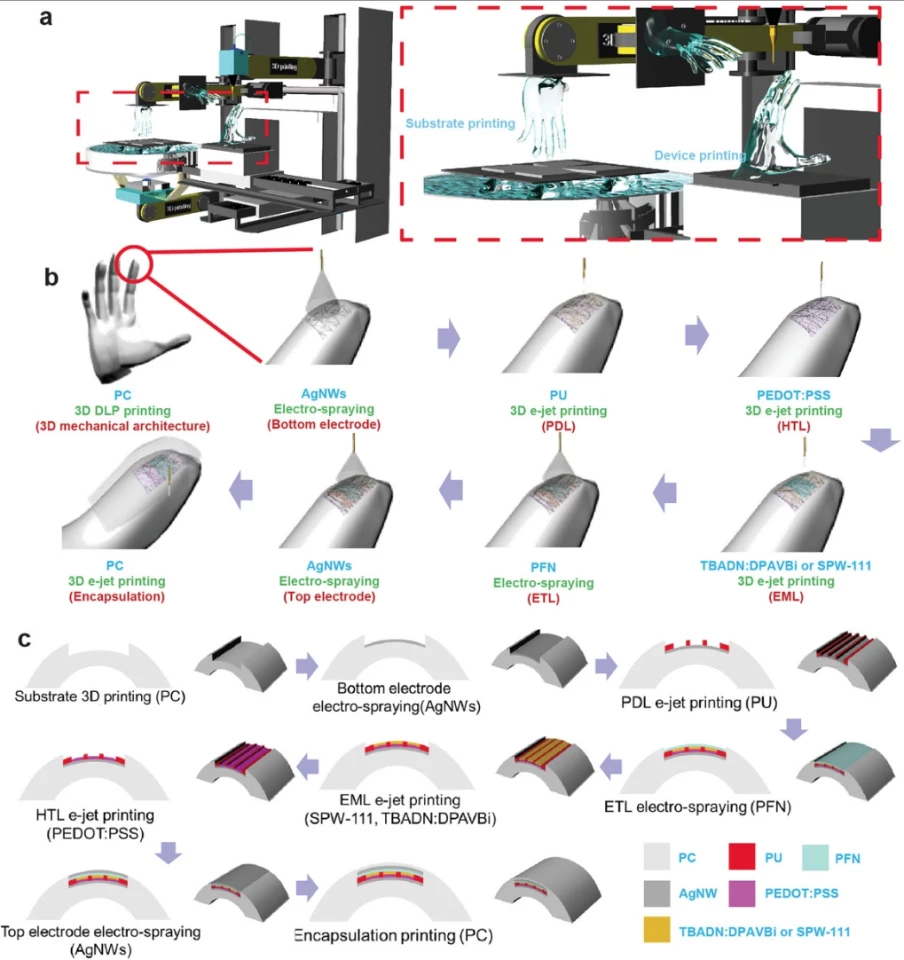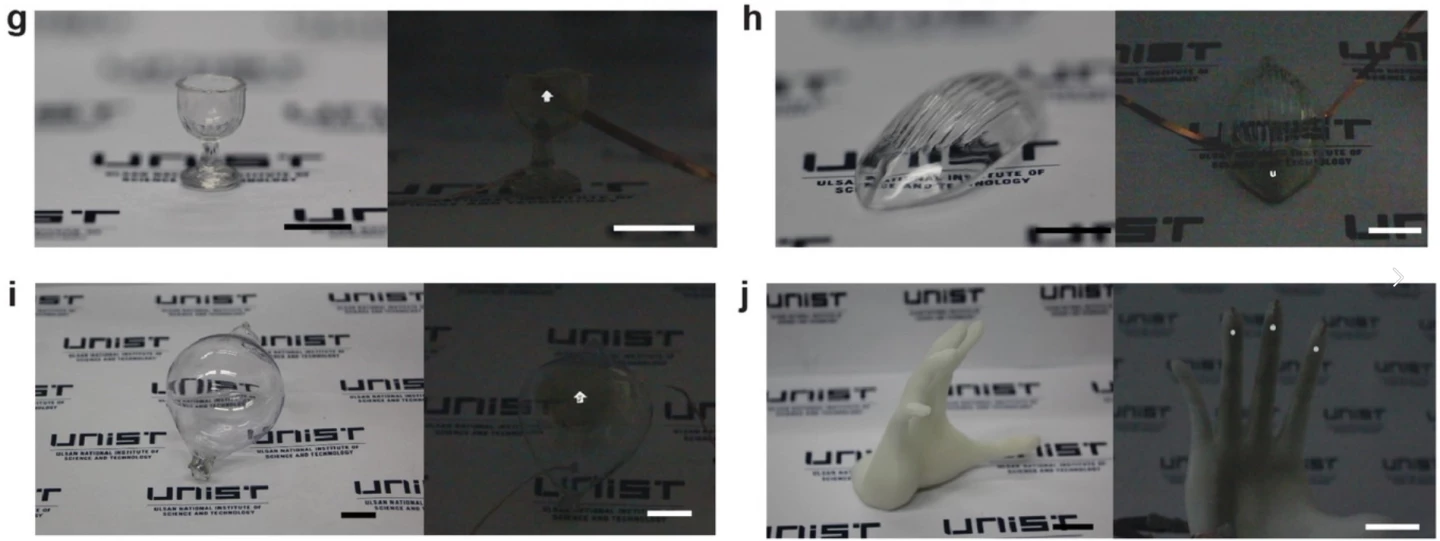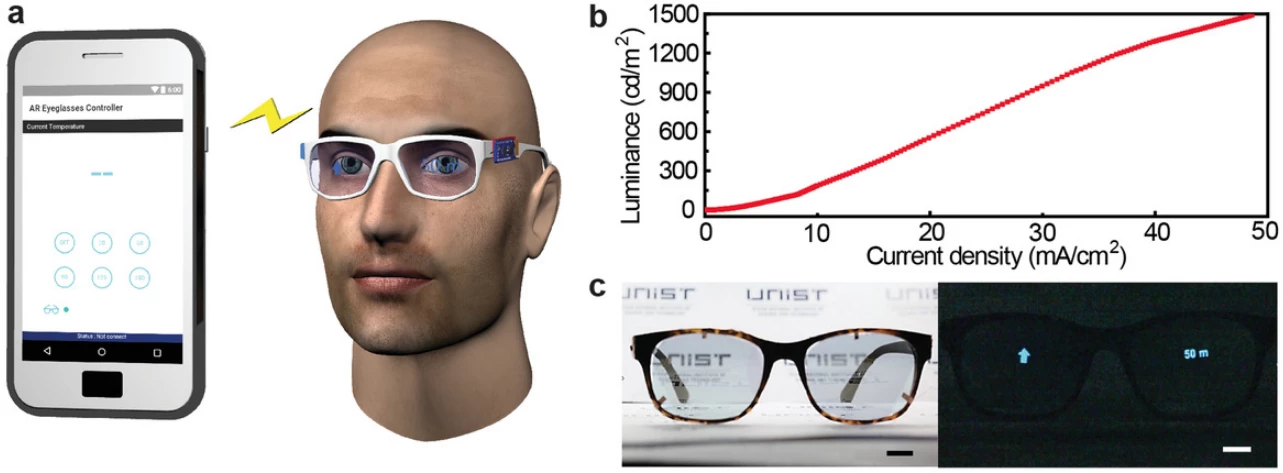A materials science and engineering team from Korea's Yonsei University has developed a 3D printing technique enabling OLED screens to be printed into transparent structures of any shape, meaning nearly anything can become a see-through color display.
Published in the open access Advanced Science journal, the team aimed to take the development and manufacturing of complex screen shapes to the next level by printing both a 3D support structure and the 3D screen electronics. Current technology would generally require 3D structures to be fitted with linked 2D screens, whereas this technique enables designers to create screens of virtually any shape, without requiring any extra thermal annealing steps.
The method uses a Digital Light Processing (DLP) system to print the transparent plastic "frames," with gaps where the screens are to sit, and then moves to a five-axis electrohydrodynamic jet (e-jet) printer which can build up an OLED screen using the following layers:
- a bottom transparent electrode comprising a matrix of silver nanowires
- a pixel defining layer made of photocurable polyurethane
- a hole transport layer using poly(ethylenedioxythiophene):polystyrene sulfonate
- a light emission layer using (try saying this fast) 4,4′‐bis[4‐(di‐p‐tolylamino)styryl]biphenyl‐doped 2‐tert‐butyl‐9,10‐di(naphtha‐2‐yl)anthracene – either that, or SPW-111, which is much easier to say
- an electron transfer layer made from poly[(9,9‐bis(3′‐(N,N‐dimethylamino)propyl)‐2,7‐fluorene)‐alt‐2,7‐(9,9‐dioctylfluorene)]
- a top transparent electrode made from a similar matrix of silver nanowires as the bottom one

The full paper is available if that list still doesn't satisfy your curiosity, but the upshot is that screens can now be printed in completely freeform shapes, embedded directly into transparent or opaque "frames" that can also be any shape. A transparent spherical screen in a snow globe. Augmented reality screens printed directly into eyeglass lenses. That sort of thing. The researchers created several prototypes, including the objects below:

They also went a step further by building a set of AR glasses with printed transparent OLED lenses capable of responding to wireless controls from a smartphone:

The researchers say the method could be sped up significantly, as the e-jet printer they were using only has a single print nozzle. They also believe new printable encapsulation materials may be able to increase the lifespan of these OLED screens thanks to lower permeability to water and oxygen.
Source: Advanced Science (Wiley Online Library) via 3Dprint.com







